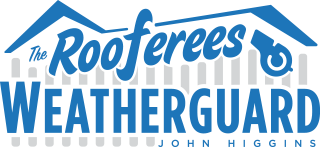We’ve already had several major hail storms roll through eastern Nebraska this spring and it’s only the beginning of May! It’s wise to be aware of what to look for and when it’s time to call in the professionals. Being vigilant now can save you headaches and costly repairs down the road.
Hailstorms can be deceptively damaging. What might seem like a minor event can leave behind hidden issues that compromise the integrity of your property, especially your roof, siding, and windows. Knowing what to look for after a hailstorm is crucial for timely detection and intervention.
What to Look for After a Hailstorm:
- Roof Damage: This is often the most vulnerable area. Look for:
- Dents or dings on shingles: These might appear as dark spots or areas where the granules have been knocked off, exposing the underlying material. Pay close attention to softer materials like asphalt shingles.
- Cracked or broken shingles: Even small cracks can allow water to seep in, leading to leaks and structural damage over time.
- Loss of granules: Excessive shedding of granules can shorten the lifespan of your roof. Check your gutters and downspouts for an unusual amount of these small, colored particles.
- Damage to roof vents, flashing, and other protrusions: Hail can dent or loosen these components, creating entry points for water.
- Siding Damage: Hail can leave noticeable marks on various types of siding:
- Dents or chips in aluminum or vinyl siding: These can be small or large, and may even crack the material.
- Cracks or holes in wood siding: Hail can impact wood with significant force, leading to splits or punctures.
- Window and Door Damage: While less common with smaller hailstones, larger hail can cause:
- Cracked or shattered glass: Inspect window panes and glass in doors for any signs of impact.
- Damage to window frames and sills: Look for dents or chips in the surrounding materials.
- Gutter Damage: Gutters and downspouts can be dented, bent, or even knocked loose by hail. Check for:
- Visible dents and dings.
- Separation from the fascia.
- Blockages from fallen shingle granules.
- Damage to Other Exterior Elements: Don’t forget to check:
- Dented or damaged air conditioning units.
- Dings on mailboxes or other outdoor fixtures.
- Damage to decks or fences.
When is it Time to Call a Pro?
While a quick visual inspection from the ground is a good first step, it’s often difficult to fully assess hail damage without a closer look. Here’s when it’s definitely time to call a qualified professional, such as a licensed roofing contractor or a reputable general contractor experienced in storm damage:
- You notice significant visible damage: Large dents, cracks, or missing shingles are clear indicators that professional attention is needed.
- You suspect damage but aren’t comfortable or able to inspect closely: Climbing on your roof can be dangerous. Leave it to the experts who have the proper safety equipment and expertise.
- You want a thorough and accurate assessment: Professionals are trained to identify subtle damage that might be missed by an untrained eye. They can provide a detailed report for insurance purposes.
- You plan to file an insurance claim: Insurance companies often require a professional assessment to process claims effectively. A qualified contractor can work with your insurance adjuster to ensure all damage is properly documented.

